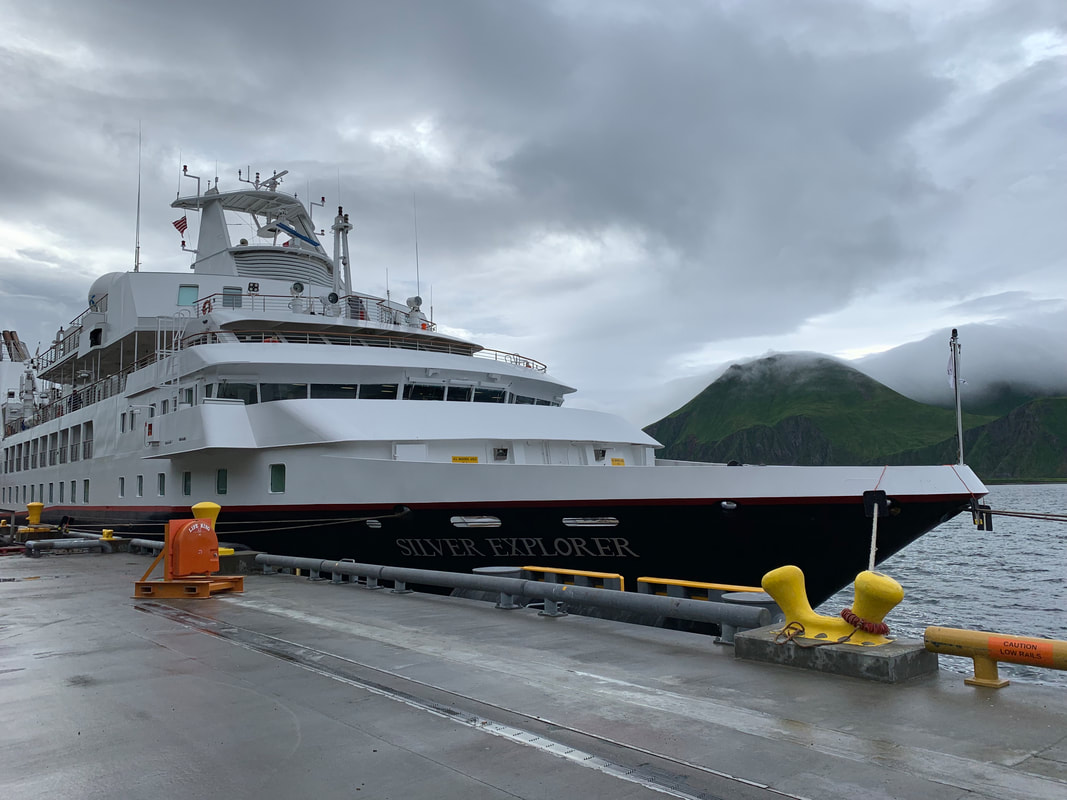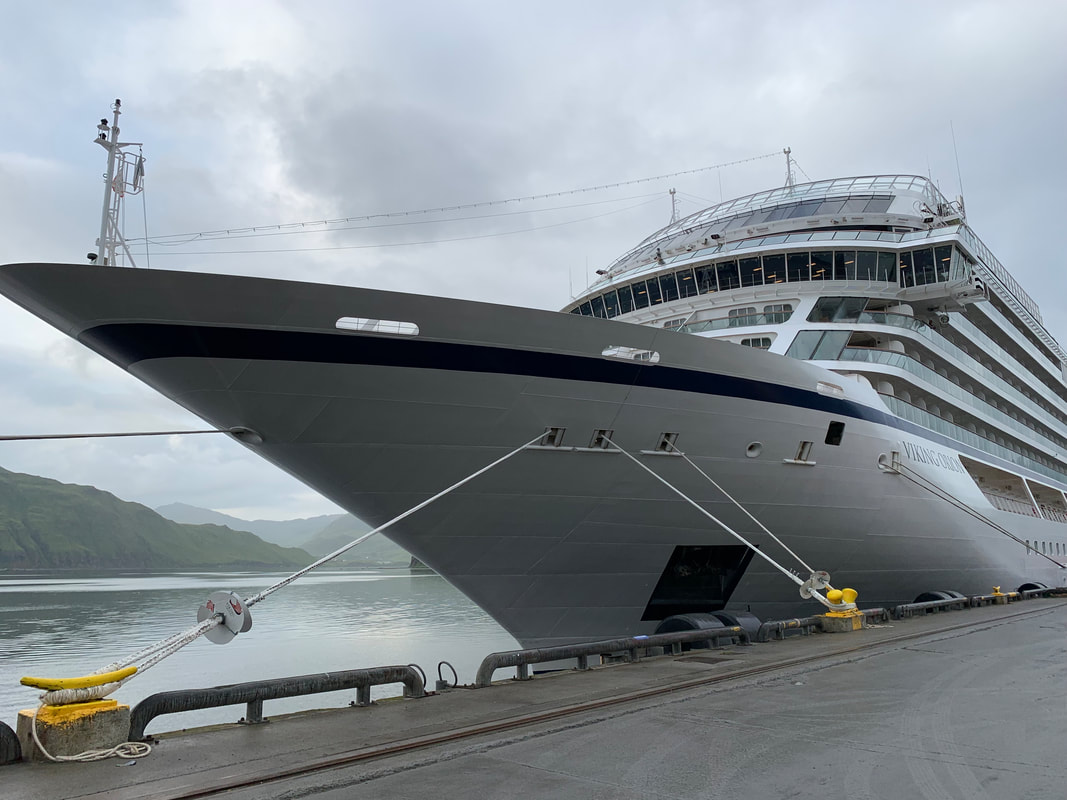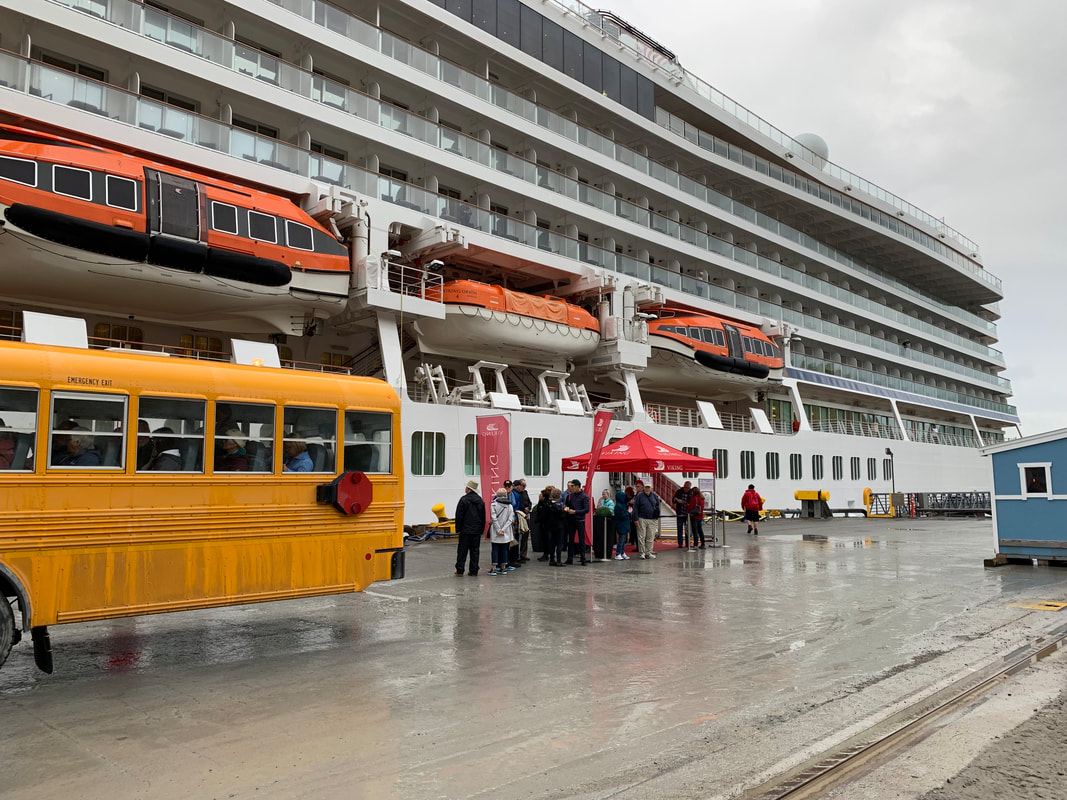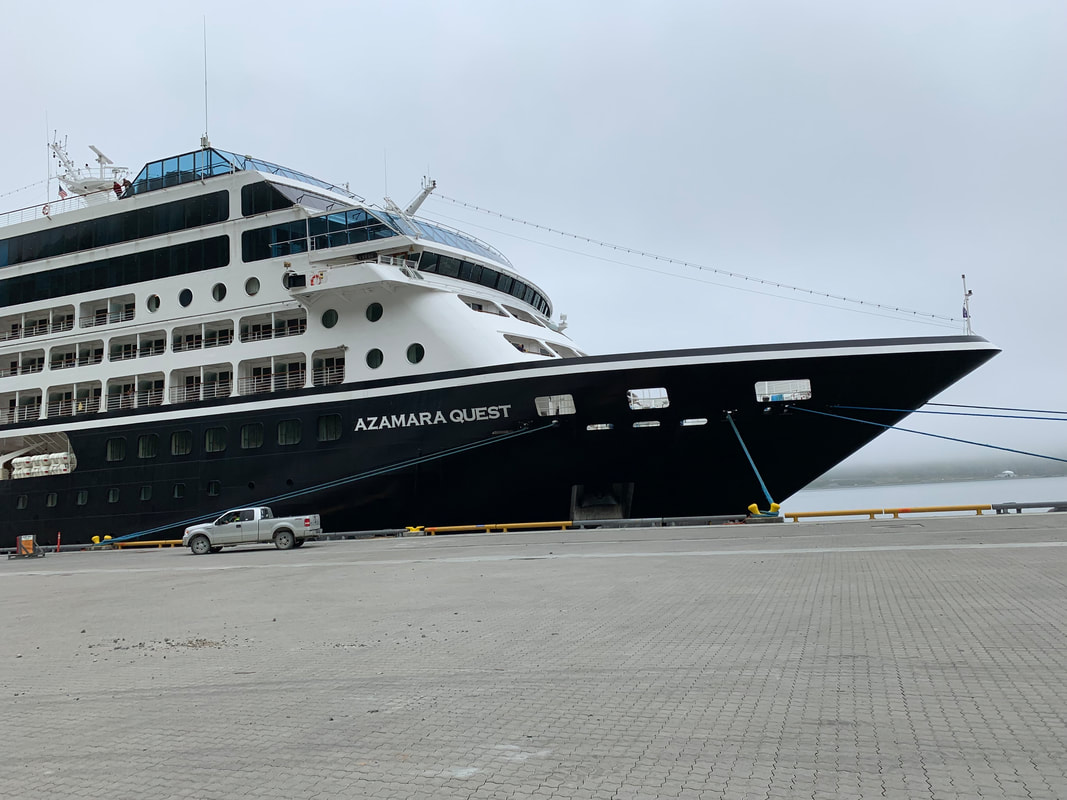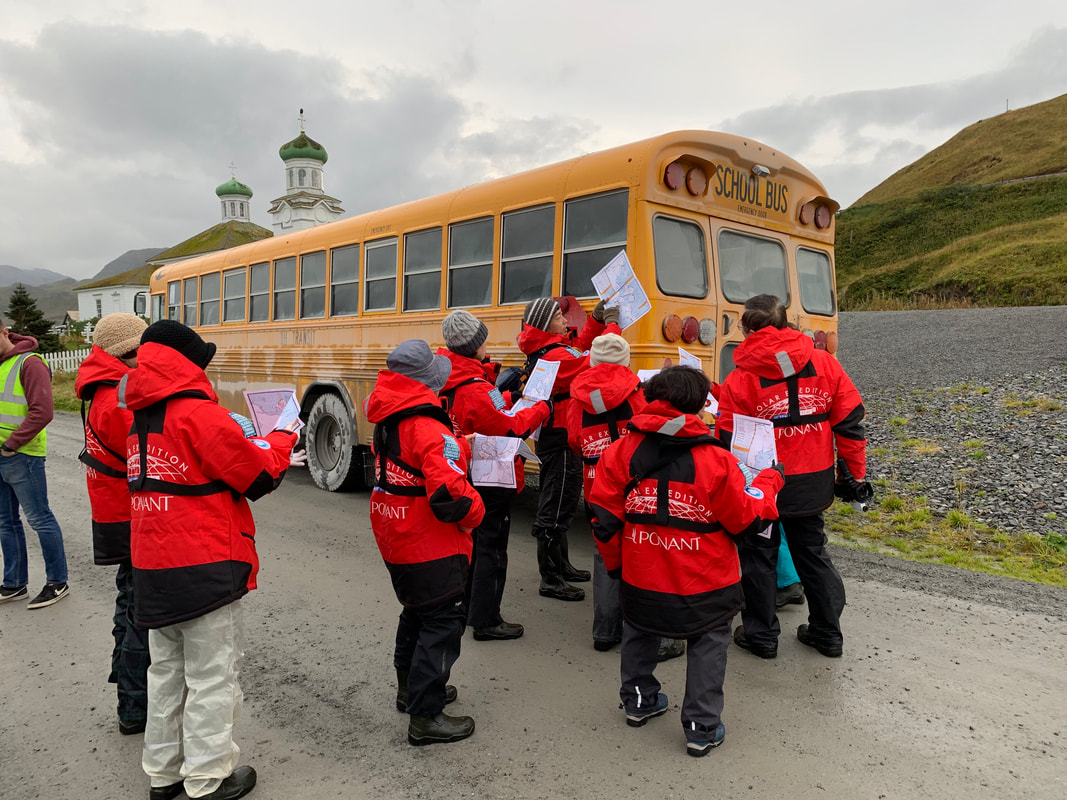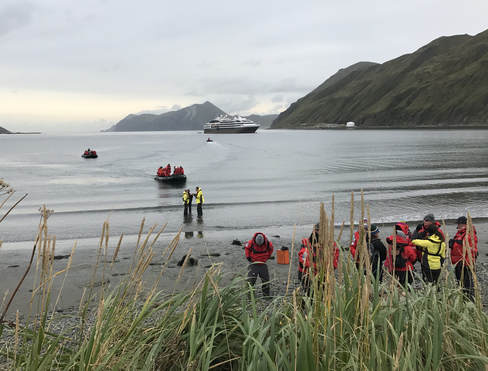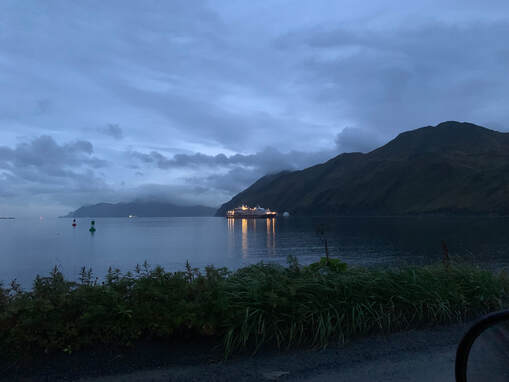|
Tentative schedule for 2023 (as of 10/25/2022): Silver Muse: May 8 and September 15; 596 max passengers Viking Orion: May 10 and September 27; 930 max passengers Seven Seas Explorer: May 14 and September 28; 150 passengers Silver Whisper: May 15 and September 11; 392 passengers Scenic Eclipse: May 24; 228 passengers Star Breeze: June 5; 312 passengers Insignia: June 30; 656 passengers Hanseatic Nature: July 9 and August 18; 530 passengers Roald Amundsen: July 23 and August 14; 530 passenger Scenic Eclipse 2: September 6; 228 passengers Nansen: September 12; 600 passengers Seabourn Pursuit: September 20; 317 passenger Silver Wind: September 21 and September 22; 294 passengers L'Austral: September 22; 264 passengers Oceania Regatta: October 17; 684 passengers If you would like to be a paid UVB ambassador or are interested in offering tours to passengers, please email the UVB at: [email protected] The number of cruise ships stopping in Dutch Harbor has been on the increase. Many of the ships that stop are smaller 'expedition' cruise ships, that carry a fleet of Zodiacs for exploring remote islands. They also have naturalists and historians on board to give lectures on the areas the ship will be visiting. Many ships are from companies that have never visited Unalaska before. Most are headed out along the Aleutian Chain to stops in Russia and Asia. Some vessels are heading north to the Arctic or coming over the Northwest Passage (many of the September ships). Cruise Lines that have visited or plan to visit Unalaska/Dutch Harbor: Crystal Cruises Viking Cruises Lindblad Expeditions (National Geographic) SilverSea Cruises Ponant Cruises Holland American Line Hurtigruten Cruises Swan Hellenic Cruises Aurora Expeditions Hapag-Lloyd Wind Star Cruises Scenic Cruises Oceania Cruises Celebrity Cruises Azamara Cruises Regent Seven Seas Cruises World of Residence |
The state ferry Tustumena schedule for 2023 will be out early 2023. Please see the Alaska Marine Highway website for more information.
dot.alaska.gov/amhs/schedules.shtml |

With climate change reducing ice cover in the Arctic, there is increasing vessel traffic over the Northwest Passage. Many of these vessels, from small sailing boats to research vessels to cruise ships, stop in Unalaska.
The first expedition to visit Unalaska en route to the Northwest Passage was that of Captain Cook in 1778. Cook, on board the sailing ship Endeavor, was on a mission from the Admiralty in Great Britain to discover the Northwest Passage. There was a 20,000 pound sterling prize (more than $1 million today) being offered at the time for anyone who discovered the fabled route that would link Europe with the Orient.
During the 18th century numerous explorers and expeditions tried to find the Northwest Passage from both the east and west.
The first expedition to visit Unalaska en route to the Northwest Passage was that of Captain Cook in 1778. Cook, on board the sailing ship Endeavor, was on a mission from the Admiralty in Great Britain to discover the Northwest Passage. There was a 20,000 pound sterling prize (more than $1 million today) being offered at the time for anyone who discovered the fabled route that would link Europe with the Orient.
During the 18th century numerous explorers and expeditions tried to find the Northwest Passage from both the east and west.
Fascination with the Arctic and the possibility of a route to the Orient had stirred European imagination for centuries. Many believed that the far north was actually a hellishly hot place (Hyperborea) and that they would find open water once they had sailed far enough north. Others imagined a massive whirlpool that would devour ships.
Cook set out from Nootka Sound in April 1778 and headed north, attempting to approach the NW Passage from the west. He charted the coastline and searched areas the Russians had reached 40 years previously. The Admiralty’s orders were to ignore inlets and rivers until they reached 65 North. Cook continued out along the Alaska Peninsula and to English Bay on Unalaska Island. Though Cook sailed as far north as latitude 70, he was unsuccessful in finding the Northwest Passage. (Bristol Bay was just one place that got its name from this expedition.)
Note: One of the original pencil drawings from Cook’s Expedition of the Unangan people is on display at the Museum of the Aleutians.
Perhaps the most famous attempt at finding the northern route was made by the doomed Franklin Expedition. This was a large British expedition that got trapped in the ice for several years and resulted in the death of Sir John Franklin and all hands in 1845. When they didn’t return, it was devastating to the British government and people.
The McClure Arctic Expedition was sent to search for Franklin. Irishman Robert McClure headed into the NW Passage from the west, but also became hopelessly trapped in ice. They were eventually rescued from the east, so McClure was credited with ‘discovering’ the NW Passage but it wasn’t until 1906 that anyone successfully sailed the entire route. The Norwegian Roald Amundsen made the first successful passage from Greenland to Alaska, with a relatively small sailing sloop and a crew of six.
The “Northwest Passage” actually encompasses multiple possible sea routes through the icy islands. With continuing loss of sea ice due to climate change, there is increasing interest in use of this route for transportation of goods. Commercial viability remains a problem though, with areas too shallow for large ships and the unpredictability of when the passage will be ice free. Lack of ports along the route also poses a problem for commercial uses.
After oil was discovered in Prudhoe Bay in 1968, the NW Passage was considered as an option for getting this oil to market. The first oil tanker to make the passage was the ice-strengthened SS Manhattan in 1969-accompanied by two Canadian and two American ice-breakers. A single token barrel of crude was loaded at Prudhoe Bay and then the ship went back. It was decided that a pipeline was more feasible and there wasn’t much activity in the NW Passage for decades.
In 1984, the first cruise ship, Lindblad Explorer, made the passage, followed in 1985 by World Discoverer. In September 2013, the first large ice-strengthened freighter, the MS Nordic Orion, make the trip. This ship, loading with coking coal, was too large when fully loaded for the Panama Canal and the trip was a test of the feasibility of this route for larger, deeper draft ships.
In 2016, the Crystal Serenity set the record for the largest cruise ship to make the voyage. Other ships calling in Dutch Harbor have also transited the passage, including Bremen, Roald Amundsen, Le Soleal, and Le Boreal. - by Ann Touza
For more information on cruise ships transiting the NW Passage, view the following link-
https://www.usatoday.com/story/travel/cruises/2016/10/07/northwest-passage-cruise-history/91720028/
Cook set out from Nootka Sound in April 1778 and headed north, attempting to approach the NW Passage from the west. He charted the coastline and searched areas the Russians had reached 40 years previously. The Admiralty’s orders were to ignore inlets and rivers until they reached 65 North. Cook continued out along the Alaska Peninsula and to English Bay on Unalaska Island. Though Cook sailed as far north as latitude 70, he was unsuccessful in finding the Northwest Passage. (Bristol Bay was just one place that got its name from this expedition.)
Note: One of the original pencil drawings from Cook’s Expedition of the Unangan people is on display at the Museum of the Aleutians.
Perhaps the most famous attempt at finding the northern route was made by the doomed Franklin Expedition. This was a large British expedition that got trapped in the ice for several years and resulted in the death of Sir John Franklin and all hands in 1845. When they didn’t return, it was devastating to the British government and people.
The McClure Arctic Expedition was sent to search for Franklin. Irishman Robert McClure headed into the NW Passage from the west, but also became hopelessly trapped in ice. They were eventually rescued from the east, so McClure was credited with ‘discovering’ the NW Passage but it wasn’t until 1906 that anyone successfully sailed the entire route. The Norwegian Roald Amundsen made the first successful passage from Greenland to Alaska, with a relatively small sailing sloop and a crew of six.
The “Northwest Passage” actually encompasses multiple possible sea routes through the icy islands. With continuing loss of sea ice due to climate change, there is increasing interest in use of this route for transportation of goods. Commercial viability remains a problem though, with areas too shallow for large ships and the unpredictability of when the passage will be ice free. Lack of ports along the route also poses a problem for commercial uses.
After oil was discovered in Prudhoe Bay in 1968, the NW Passage was considered as an option for getting this oil to market. The first oil tanker to make the passage was the ice-strengthened SS Manhattan in 1969-accompanied by two Canadian and two American ice-breakers. A single token barrel of crude was loaded at Prudhoe Bay and then the ship went back. It was decided that a pipeline was more feasible and there wasn’t much activity in the NW Passage for decades.
In 1984, the first cruise ship, Lindblad Explorer, made the passage, followed in 1985 by World Discoverer. In September 2013, the first large ice-strengthened freighter, the MS Nordic Orion, make the trip. This ship, loading with coking coal, was too large when fully loaded for the Panama Canal and the trip was a test of the feasibility of this route for larger, deeper draft ships.
In 2016, the Crystal Serenity set the record for the largest cruise ship to make the voyage. Other ships calling in Dutch Harbor have also transited the passage, including Bremen, Roald Amundsen, Le Soleal, and Le Boreal. - by Ann Touza
For more information on cruise ships transiting the NW Passage, view the following link-
https://www.usatoday.com/story/travel/cruises/2016/10/07/northwest-passage-cruise-history/91720028/

